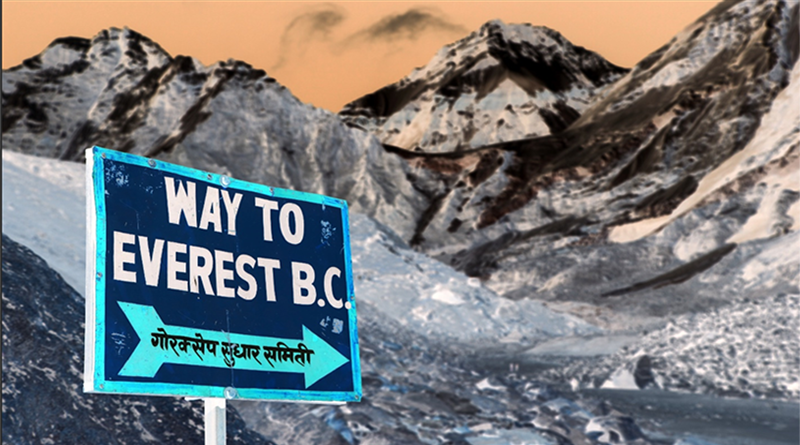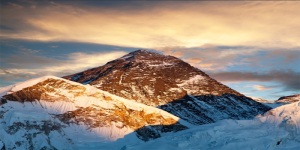Will the Everest Base Camp Trek make you sweat?
Everest Base Camp Trek is a bizarre presentation of nature. This trek tests your patience, willpower, and bravery in different physical and psychological fashion. No one knows what these snowy mountains are planning for you.
Everest Base Camp trek introduces you to the death-threatening landscapes where brave Himalayan Sherpa people, Himalayan wildlife, and cultural and historical heritages are well placed. Reaching the base of the world’s highest peak is not as easy as you think. Lots of hurdles, cramps, altitude sickness, and traveling difficulties arise due to acclimatization problems.
You may face severe challenges during the trek including
-
Altitude difficulties
A normal hiker breathes the entire life at sea level altitude which provides the maximum oxygen 100%. But, during the EBC trek, we attained the maximum altitude of 5364 meters which has only 50% of oxygen as compared to the oxygen at sea level. This massive difference is sufficient to take down anyone who is not physically well.
This problem is raised by most of the hikers around the world. The available oxygen level according to the altitude can be demonstrated below
Altitude Oxygen Level
Sea Level 100%
1,000m / 3,281 ft. 88%
2,500m / 8,202 ft. 73%
3,000m / 9,843 ft. 68%
3,500m / 11,483 ft. 64%
4,000m / 13,123 ft. 60%
4,500m / 14,764 ft. 57%
5,000m / 16,404 ft. 53%
5,364m / 17,599 ft. (Everest Base Camp) 50%
-
Disheartening and Challenging Routes
Behind the beauty of Everest Base Camp, there is also a harsh reality of challenging the Himalayan surface with sloppy and life-threatening routes. The route gets even worse if it rains or snows which is often seen in such altitude. These circumstances will be exciting, adventurous as well and dangerous at the same time. Just the landscapes below your legs will be sufficient to disturb your focus. So the Spring season is considered the best time to get rid of all these problems.
-
Battling against Freezing minus-degree temperature
It is never easy to hike in freezing temperatures if you are not familiar especially at such a high altitude. The frequently changing weather and temperature will take your real test. The annual temperature of Nepalese Himalayan altitude ranges from -5 degrees c in winter to 22 degrees c in summer. Even in summer, due to low atmospheric pressure and high altitude, the temperature will be enough to kill your confidence.
-
Language barrier
The locals in this region speak Tamang, Sherpali, and Nepali. You will observe the cultural differences between them as we proceed to the further altitude. However, English is almost spoken by everyone if not broken English is understood by the people having homestays and lodges.
-
Himalayan cuisine
As the altitude progresses, the lifestyle, culture, and tradition of people differ so does their cultural cuisine, You will be very excited to taste the best cuisine on the Himalayan surface by different indigenous tribes in the areas above 4,000 m.
Mount Everest from Kala Patthar
Weather in season across the year in EBC trek
Spring Season (April-May)
Daytime Temperature 15 degrees C
Nighttime Temperature -1 degree C
Wind speed- 11km/h
Precipitation/month- 7mm
Sunshine hours/day- 9
Spring season is considered the best season with clear blue skies and adequate weather conditions. This season is best for hikers seeking the panoramic views of the Everest region. Filled with redly decorated rhododendrons and beautiful butterflies flying all over the bunch of flowers reflects the moment of joy.
Monsoon Season (June – September)
Daytime temperature: 22°C
Nighttime temperature: 4°C
Wind speed: 10km/h
Precipitation/month: 170mm
Sunshine hours/day: 7-8
The months from June to September experience heavy rainfall making the hike pretty dangerous, and the chances of an avalanche certainly increase due to continuous rain. However, the temperature rises to 22 degrees C which is a great sign for hikers during these months.
`.
Autumn (October – November)
Daytime temperature: 17°C
Nighttime temperature: -8°C
Wind speed: 22km/h
Precipitation/month: 2.5mm
Sunshine hours/day: 9-10
This season is considered an ideal time for the visit to base camp as the weather remains favorable in the beginning. You will witness less rain and crystal clear panoramic views can be encountered from the way. This season along with Spring is mostly considered as the best time for trekking.
Winter (November – April)
Daytime temperature: -5°C
Nighttime temperature: -15°C
Wind speed: 7-8km/h
Precipitation/month: 5mm
Sunshine hours/day: 7-8
This season is considered the worst time ever delivering lots of hurdles and difficulties from weather conditions and temperature. This is the coldest period in the EBC region covered by snow throughout the calendar where the temperature gets down to -17 degrees even during the daytime. Very little sunshine which makes somewhat survival condition for the trekkers.
Best season considering weather and visibility
The favorable season depends upon the level of trekking offered by the hikers. For a beginner who wants to witness the magic happening in the highest peak in the world, without a doubt, April is considered the most favorable but for the trekkers who accept the challenge and have the guts to battle against the harsh nature, winter might be the best one.
Analyzing the survey done to choose the best season among trekking guides 90% have given thumbs up on Spring as their best favorable season and 80% have chosen April as the best month for the trek. Thus, for normal hikers, April delivers a commendatory experience.
Are you fit enough to walk in the Himalayas?
Without any second thought, the EBC trek is the ultimate synonym of difficulties. To cope with the extreme temperature, weather, roads, and countless hurdles, one needs to not only be physically fit but also mentally well prepared. It’s like going to war against life-threatening difficulties. No matter how physically fit you may be if you have a phobia of height, it will certainly be an adventurous nightmare for you.
We have designed our trekking plan in such a way that even a moderate-level fit person can hike around the hills and snow without any further difficulties. Taking the proper diet supplements on a proper timing basis and adequate rest can decrease the risk of cramps and injuries during hiking.
Not only about the physical ability but also if a person is suffering from heart-related and respiration-related disease, altitude may be the major factor for them. However, previously recorded hundreds of such low-level fit trekkers have successfully summited the base camp of Everest.
Let’s Know the periphery of EBC for fitness
Everest Base Camp breaks the Shackle of every bit of biodiversity in trekking ingredients. From terrains, rivers, and glaciers to snow-capped routes, one needs to encounter challenging tracks performing good athleticism. Major parts of the routes are easy and moderate where some of them require some serious athleticism. The routes from Jorsalle to Namche and Pungi Thanga to Tengboche require good skill and stamina however, it may be an easy task for the gym freak. Acclimatizing the altitude properly along with proper rest can help in recovering the physical and mental stamina back right for the next day. You need to pass the most difficult walk in Kala Patthar sensibly.
Let us make you prepared
To be frank, if are desperate to reach the base camp, there is no external power that can stop you from doing it. Countless incidences prove even a low-level fit trekker also successfully climbed the base camp. However, if you are a regular gym person, swimmer, physical trainer, or runner then you are entirely already prepared for the trek.
If you are not involved in Physical activities and you are attempting to reach base camp then you will need to prepare yourself first. You should be able to walk 4 to 7 Kilometers daily at least for 20 days. This is the minimum bandwidth to successfully chase your dream of reaching the camp. There is a package Luxury Everest base camp trek, that makes the EBC trip a little bit easier for you. It provides better accommodations, foods and other facilities to make your Everest trek a bit comfortable.
As the maximum altitude during this trek is 5545 m, you need to acclimatized yourself in that altitude enabling your body to sustain breathable air.
Mental preparations
If this is the first time you are trekking then you should be clear about the decision first. Once we start our hike, there is no look back except if any medical issues arise during the trek. The best thing about the EBC trek is that you don’t need any motivation. The nature and the atmosphere here itself create an aura of doing it till the last breath.
You should be mentally ready to experience any upcoming challenges that arise during the trek. You may have some meditation classes right before your arrival. The alluring landscapes will never make you mentally disturbed.





